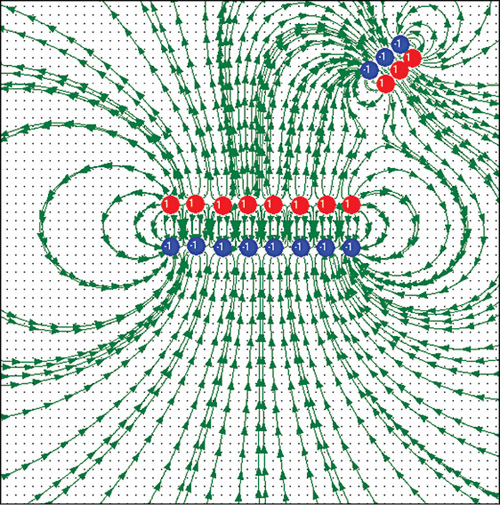Limiting radiated noise. To limit the effects of radiated noise, we do two things—we limit the amount of time that the sensor is connected to the conversion circuitry, providing a pathway for the noise, and we dither the timing of the sample to prevent a beat frequency between the sample rate and the radiated noise. Actual mechanics of the conversion process also determine the susceptibility of the system to radiated noise, so some conversion methods will be better suited to the rejection of radiated noise.
Other challenges
All these techniques help reduce the amount of noise coupled into capacitance conversion. However, no matter how carefully we make the conversion, some noise will sneak through in the sample. In addition, the amount of shift we see due to a touch, and particularly proximity detection, is quite small.
To handle the noise that does come through and to improve sensitivity, we take multiple samples and average the results together. This increases the amount of shift we see due to a touch, helps average out the noise and actually limits the rate of change in the measured value. After all, the speed of a user’s touch is significantly lower than the typical frequency of noise in the system, so we can live with a system that has a slower response time if it helps to cancel out the noise.

Another useful function is to incorporate a slew-rate limiter on the data. Basically, this function looks at each new sample; if the sample is above average, the average is increased by 1-5, and if it is less, the average is decreased by a similar amount. This prevents large noise spikes from dragging our average up and down, while still passing slower changes in the samples.
Together, these functions allow a capacitive-touch system to operate, even in noisy environments. It turns out, that is exactly the environment in which lighting systems have to be able to survive. After all, lighting systems typically share power with some prolific noise sources, including HVACs, computer systems, inductive loads (motors and pumps) and other lighting systems, which all put out plenty of conducted noise. On top of all this, we also live in a wireless world, which includes mobile phones, Wi-Fi and broadcast radios/televisions.
So, any lighting system that wants to include capacitive touch, and especially proximity interfaces, will require capacitive systems that can operate in the presence of both radiated and conducted noise sources. Fortunately, most capacitive-touch systems currently on the market can tolerate noise levels that are typically encountered in home and office environments. As designers, we just have to make sure we verify that the pre-fabricated capacitive-touch system is rated for the level of noise we are likely to encounter.
Implementing this into the interface
Now that we have a noise-resistant capacitive touch/proximity system, how can we use it for our interface? Well, in the simplest system, we just have to turn the lighting on and off. However, most higher-end systems are also going to need dimming, so we really need an interface with some level of gesture-recognition. Further, because handing out a users’ manual with a light switch is impractical, gestures used will have to be intuitive for the user. Finally, whatever system we use, it has to be reasonably immune to false triggering.
The main requirements are:
1. Simple and intuitive method for turning lights on and off
2. Simple and intuitive method for dimming the lights
3. Reasonable immunity to false triggering
4. Minimal power consumption when not in use
5. Low material cost
From requirements one and two, we know we will probably need some kind of legend explaining the operation of the interface. Given that we are also talking about lighting control, our legend will either have to glow in the dark or have some kind of tactile information. From requirement three, we know we cannot just toggle the light on and off when a user passes in proximity to the switch.
Requirements four and five indicate that we will have to limit both power and cost. Fortunately, most modern microcontrollers can operate on very little power. These also have all necessary peripheral functions required for both lighting control and capacitive touch.
Therefore, given all these requirements, a reasonable interface would use capacitive proximity to turn on the backlighting for the button legends and a basic buttons-and-slider interface for turning the lights on and off, and dimming. All necessary functions to implement the design should be available in a variety of single-chip microcontrollers, and the necessary capacitive UI software should be readily available from the microcontroller manufacturer.







i can join with u